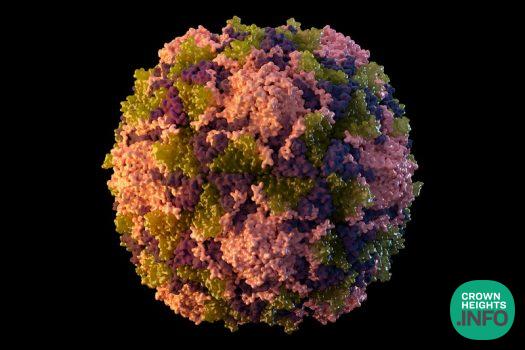
Polio Again Detected In Brooklyn Sewage, No New Cases Identified
On Sunday, October 9, New York State extended the Executive Order to continue to maximize the resources available to protect New Yorkers against polio through vaccination. While only one case of polio has so far been identified, ongoing wastewater surveillance provides evidence of repeated poliovirus detections in sewage samples in the greater New York metropolitan area. The latest wastewater results include an August sample, collected in New York City from Brooklyn (Kings County) and a small, adjacent part of Queens County, tested by CDC, that is genetically linked to the case previously identified in Rockland County.
State Health Commissioner Dr. Mary T. Bassett and City Health Commissioner Dr. Ashwin Vasan said, “These findings put an alarming exclamation point on what we have already observed: unvaccinated people are at a real and unnecessary risk. We have seen more New Yorkers getting vaccinated. But the latest results are a searing reminder that there is no time to waste, especially for young children, who must be brought up to date with vaccinations right away. Paralysis changes life forever. Fortunately, the response is simple: get vaccinated against polio.”
Most adults do not need polio vaccine because they were already vaccinated as children. But for unimmunized and under-immunized children – as well as adults who know they are unvaccinated, particularly those who live or work in Rockland County, Orange County, Sullivan County, and New York City – the message from both agencies remains the same: the poliovirus in New York today is an imminent threat. Now is the time for New Yorkers, parents and guardians, and pediatricians and providers to urgently make sure they, their children, and their patients are up to date with polio immunizations. Wastewater and clinical surveillance are ongoing and will continue.
Polio is a serious, life-threatening disease that affects the nervous system and can cause muscle weakness, paralysis, or death. Polio is very contagious and can be spread by someone even if they aren’t sick or experiencing symptoms, which range from mild, flu-like symptoms to paralysis, permanent disability, and death. The inactivated polio vaccine (IPV) is 99 to 100 percent effective at preventing paralysis among people who get all recommended doses. That’s why driving immunizations among unvaccinated and under-vaccinated children and communities – especially in counties of concern – remains the backbone of New York’s public health response.
The work of health officials at the local, State, and national level are advancing these efforts. From July 21 to October 2, more than 28,260 polio vaccine doses have been administered to children 18 years and younger in Rockland, Orange, Sullivan, and Nassau Counties — a 14 percent increase compared to the same time period in 2021.
On September 28, State Health Commissioner Dr. Mary T. Bassett declared poliovirus an imminent threat to public health in New York State, thereby expanding the availability of funding and resources to support local health departments in establishing immunization clinics, deploying vaccine to health care partners, and conducting outreach to unvaccinated and under-vaccinated New Yorkers to increase immunization rates particularly in the areas affected by the virus and among children.
Governor Kathy Hochul’s extension of the State Disaster Emergency enables the State to aggressively tackle any potential spread and threat to public health. The declaration increases the availability of resources to protect New Yorkers against paralytic disease, bolstering the immunization drive by expanding the network of polio vaccine administrators with the addition of EMS workers, midwives, and pharmacists and authorizes physicians and certified nurse practitioners to issue non-patient specific standing orders for polio vaccines. The E.O. also requires healthcare providers to send polio immunization data to the New York State Department of Health (NYSDOH) through the New York State Immunization Information System (NYSIIS), enabling NYSDOH and local health departments to focus vaccination activities where they are needed most and have yet another datapoint to understand the level of protection against polio in communities.












